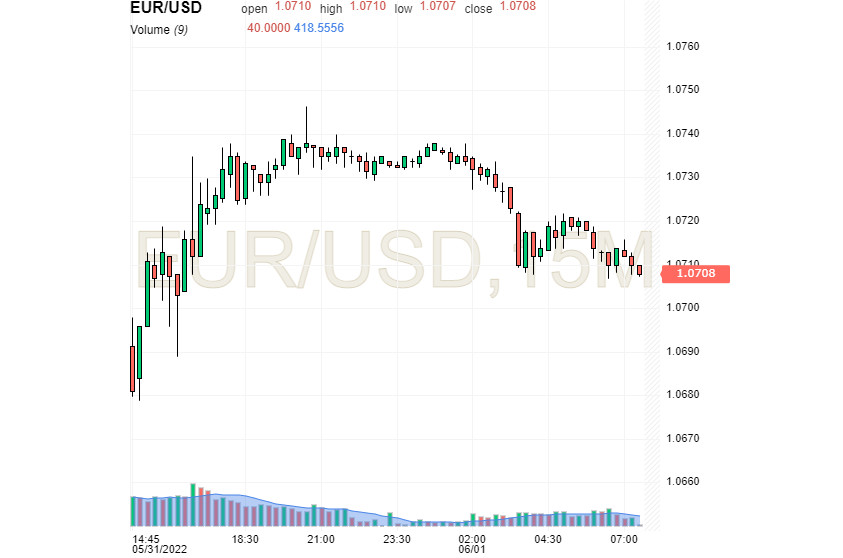

The US currency, experiencing euphoria from the rise, admits the possibility of a significant decline in the medium and long-term planning horizons. However, now the greenback holds the leading position, pushing the euro to low values.
This week the pressure on the euro increased. This was facilitated by negative macroeconomic statistics for the euro area. Recall that for the month inflation in the EU soared to 0.9%, doubling the forecast. According to current reports, consumer inflation in the euro area reached an impressive 8.1% in May, surpassing the expected 7.7%. According to analysts, the figure is almost equal to the rate of inflation in the United States. This negatively affected the market, as the risk of stagflation increased in the face of the current actions of the European Central Bank.
In the long term, the dynamics of the euro will be affected by the sixth package of sanctions against Russia, adopted earlier this week. It includes an embargo on Russian oil, excluding supplies to landlocked countries. According to experts, this decision is a double-edged sword, since the blow to the export earnings of Russia contributes to the acceleration of inflation and a decrease in economic growth in the EU.
Against this background, the US currency feels confident, despite fears about another round of inflation. The greenback is supported by a decrease in risk appetite in the markets. The current growth of the USD is facilitated by two "pain points" of investors - increased inflation and the uncertainty of the consequences of tightening monetary policy by the Federal Reserve and the ECB.
On the last day of May, the greenback found a foothold, feeling the support of investors. However, its growth may be the beginning of a grandiose collapse. However, there is no cause for concern in the short term. Relative stability to the dollar was given by positive macro-statistical reports. According to current data, the US consumer confidence index fell to 106.4 points in May from 108.6 points in April. At the same time, economists expected a more significant decline (to 103.9 points).
With regard to the euro, many analysts believe that the transition to negative rates by the ECB played a decisive role in its fall. In the medium term, risks for the euro may increase. According to currency strategists at CIBC Bank, the current uncertainty and concerns about the prospects for the European economy and the EUR will force the central bank to reconsider previous requirements for monetary tightening.
The euro is currently unable to attract bulls and boost demand as the current situation puts the ECB in a difficult position on the pace of monetary tightening. This is reflected in the state of the American and European currencies. The EUR/USD pair cruised near 1.0708 on Wednesday morning, June 1, losing some of its gains.

The dollar started to strengthen again thanks to the growth of yields on US Treasury bonds. However, this contributed to a short-term decline in the EUR/USD pair. At the same time, since the middle of last month, the pair has been trading above the upward trend line, near 1.0700. At the moment, this support level holds the defense. However, if it turns into a resistance zone, then the EUR/USD pair will face additional losses, namely, falling to 1.0680 (50-period SMA), then to 1.0660 (static level) and lower to 1.0620 (200 -period SMA).
Currency strategists at CIBC bank expect the dollar to strengthen in the short term if long-term interest rates rise and investors are cautious about risk. At the same time, a significant rise in the USD from current levels is unlikely, since the market's expectations regarding the Fed's rate hike are too high. At the moment, there is enough money in the greenback to rule out the possibility of a long rally in the coming months. The CIBC believes that the markets will reconsider the Fed's interest rate pricing. "This will allow the dollar to remain on the defensive while other currencies play catch up," the bank said.